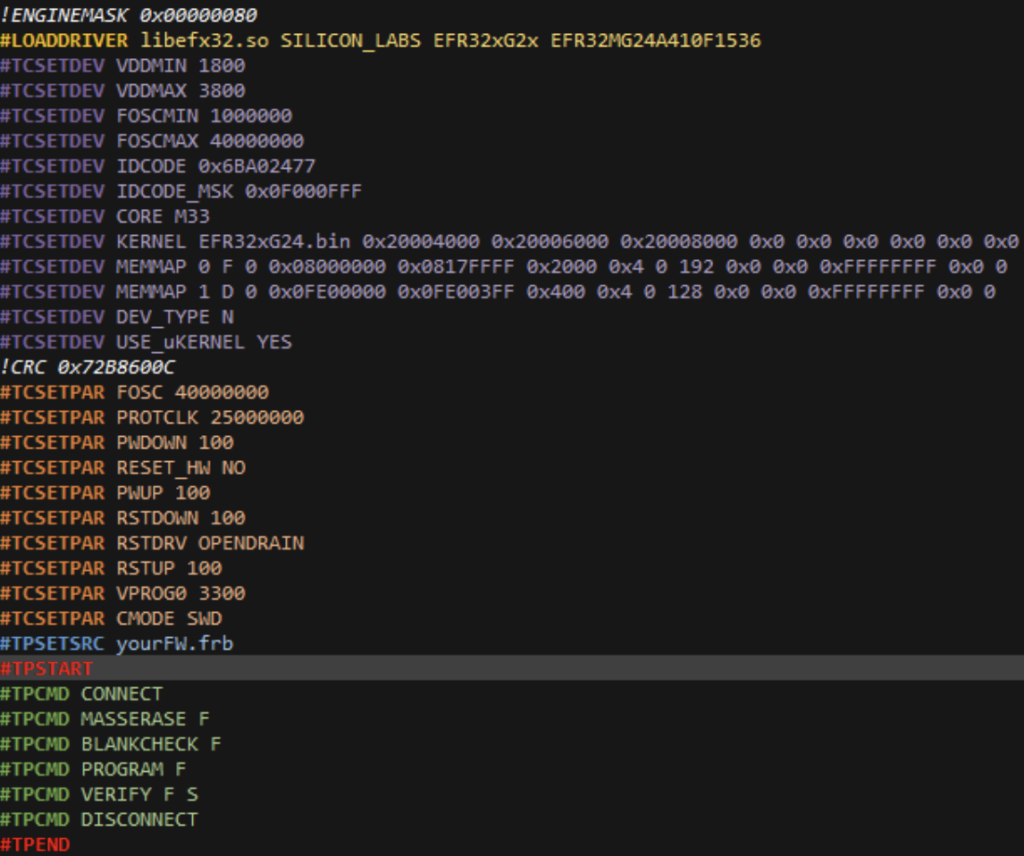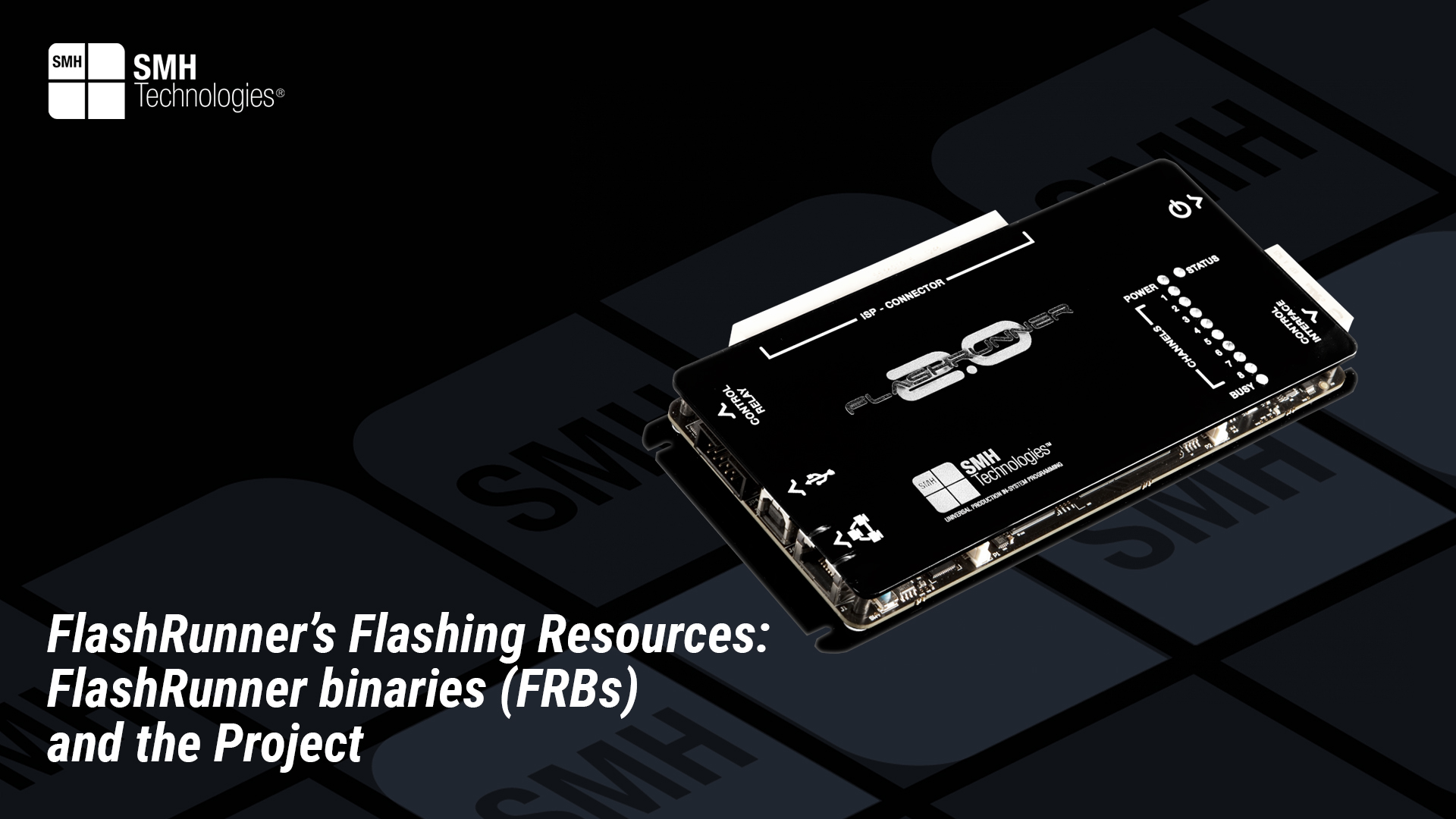Project Description
Licenses and flashing algorithms are fundamental core elements for flashing ISP targets with the FlashRunner programming system. However, there are two other relevant elements that are important to discover: FlashRunner binaries (FRBs) and the project.
Continue reading to delve deeper into these technical aspects of FlashRunner Technology.
FlashRunner’s flashing resources: FlashRunner binaries (FRBs)
FRBs are in few words the data to be flashed inside the non volatile memories of the ISP targets.
FlashRunner can manage different firmware format, from the most common ones to the least used.
Let us quote three of the main firmware format:
1. Raw binary
2. Intel hex
3. Motorola SREC (.s19, .s37, .mot, .ptp, …)
Furthermore, some silicon producer proprietary firmware formats are supported as well. Among them it is possible to quote:
1. AHEX (Infineon proprietary firmware format for XDPL8 devices)
2. TI-TXT (Texas Instrument proprietary firmware format for MSP430 devices)
3. RPI (Renesas proprietary firmware format)
4. …
Given a firmware in one of these formats, FlashRunner environment allows to convert it into an FRB file. A conversion report is also created to let customers see that nothing is different from the original firmware in terms of data to be written inside the memory.
This being said, the FRB is nothing more than the result of the original firmware converted into this format which is easier to be handled by FlashRunner, that gives more advantages in the flashing process in terms of flashing time and that, thanks to its structure, introduces less overhead while flashing it into the non-volatile memory.
Since FlashRunner has the capability to flash multiple ISP targets in parallel, having reduced the overhead with this FRB firmware format, allows the programming system to not have decay in fetching the data to be installed in parallel into the non-volatile memories of the different devices.
Another benefit of the FRB format is that it allows to easily encrypt the data contained in it with very powerful cryptographic algorithms, so that the intellectual property of the customers firmware is protected.
FlashRunner’s flashing resources: FlashRunner binaries (FRBs)
A project is a set of very high level instructions to effectively launch FlashRunner programming system, that puts together all the concepts explained in the previous chapters and allows the customer to interact with the ISP target and flash it.
Let us analyse a simple general example of FlashRunner project (,prj file) created with FlashRunner GUI.

The first white line called ENGINEMASK specifies to the programming system where the user connected the ISP target.
Every bit position set to 1 selects the channels used: in this case the hexadecimal value is 0x00000080; by converting the last two nibbles 0x80 into a binary value, the resulti s 0b10000000.
It means the bit position 7 is set to 1: the starting channel is channel 1, it means that bit position 0 is related to channel 1. Following this concept, bit position 7 means that the user is telling to the programming system that an ISP target is connected to channel 8.
The ‘Technical Updates’ category is the section of SMH Technologies’ Corporate Blog where a wealth of technical information is uploaded. Our Team is always available to provide any further information needed about FlashRunner’s innovative technology.



